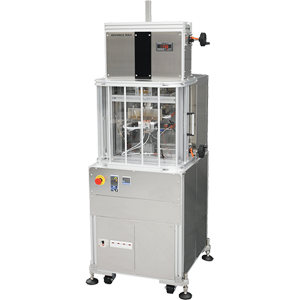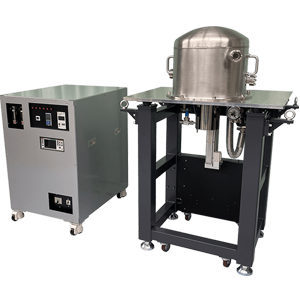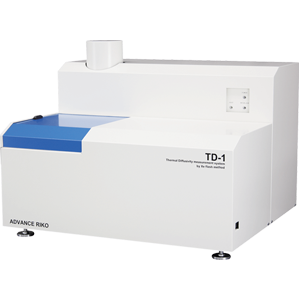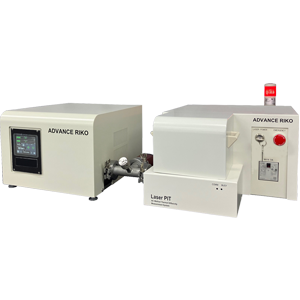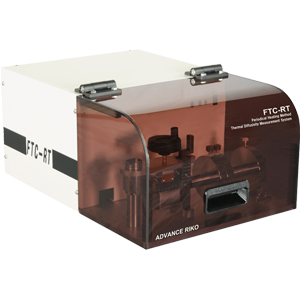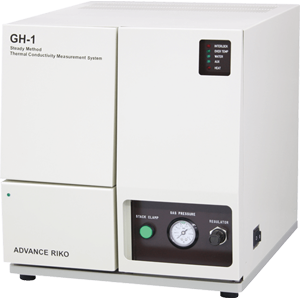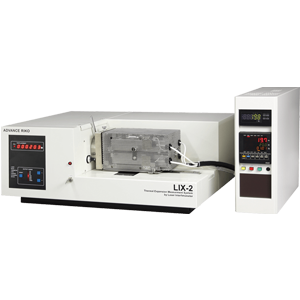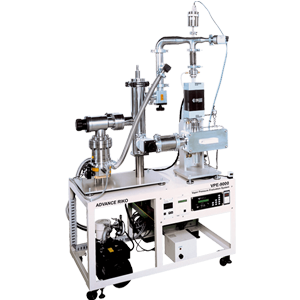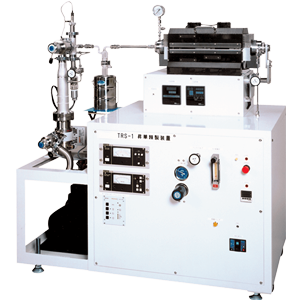Organic and polymeric Product list
As thermal measurement for polymers and organic materials, it is possible to make the evaluation for each process from material evaluation to material refining, such as heating observation test, thermal conductivity measurement, thermal expansion measurement, electrical resistance measurement, insulation resistance measurement, saturation vapor pressure measurement, sublimation refining, etc.
In addition, we can also follow the requests for the measurement of thermal characteristics of materials for all-solid-state batteries.
-
Thermal Flow Rate Evaluation System for Low Thermal Resistance Multilayer Substrates F-CAL
It is possible to measure the multilayer materials, which is difficult with the laser flash method. This system is to measure the heat flow rate of a sample. A heating block is contact with the high temperature side of the sample, and the low temperature side of the sample is contacted with a low temperature block which works as both a cooling and a heat flow meter to perform measurement.v It is possible to measure the heat flow rate flowing……
-
Ultra High Precision Thermal Expansion Measurement System by Laser Interferometer SuperLIX
The world of expansion with accuracy of 1×10-8/K or less Thermal expansion measurement with the world-class ultra high accuracy *as a commercial measurement system Application case Development of zero-expansion materials Development of negative thermal expansion material and anode materials Development of standard materials Development of materials for actuator
-
Thermal Diffusivity measurement system by Xe flash method TD-1
Capable of evaluation of heat radiation film in the thickness direction and anisotropy The most suitable system for the evaluations of heat dissipation films etc. By using Xenon lamp, it enables to minimize the damage to the sample. Sample anisotropy can also easily measure by using the original attachment as an option.
-
AC Method Thermal Diffusivity Measurement System LaserPIT
Thermal conductivity evaluation in-plane direction of films, thin sheets and thin films etc. This system can measure thermal diffusivity of sheet materials in-plane direction by scanning laser heating AC method (Angstrom method). About high thermal conducting films, sub-micron thin films can also be measurable.
-
Periodical Heating Method Thermal Diffusivity Measurement System FTC series
Easily evaluate thin film materials that are difficult to measure with the flash method This system measures thermal diffusivity in the thickness direction of solids such as film polymers, paper, and ceramics by using the AC joule heating method. With specialized in room temperature measurement only, which is highly needed, a compact body and low cost have been achieved.
-
Steady Method Thermal Conductivity Measurement System GH series
Thermal conductivity evaluations of polymers and glass A heat-flow method Steady Method Thermal Conductivity Measurement System that complies with the US ASTM E1530 standard. This system measures comparatively low-thermal conductivity materials over a temperature range of 50 to 280°C.
-
Thermal Expansion Measurment Systemby Laser Interferometer LIX-2 series
High-accuracy measurement of thermal expansion with a minimum resolution of 1nm This is a laser thermal expansion measurement system with ultra-high sensitivity developed by the use of the latest optical techniques. This system is suitable to be used as a calibration system for a standard thermal dilatometer, also to measure absolute thermal expansion measurements of unknown samples. This system is compliant with JIS R3251-1995, Measuring method of the linear thermal expansion coefficient for low expansion glass by laser interferometry.
-
Thermomechanical Analyzer TM-9000 series
Capable of viscoelasticity measurements in various atmospheres Measures the thermal expansion and contraction of solid samples. Capable of stress relaxation measurements. Capable of performing thermal expansion measurements by tension to film materials
-
Vapor Pressure Evaluation System VPE-9000<vacuum thermobalance>
Stable changes in weight in a high vacuum This system evaluates saturated vapor pressure and the thermal behavior of organic materials. An exhaust method is employed that allows stable measurements even in a vacuum. Achieves precise temperature controllability and responsiveness with the Infrared Gold Image Furnace
-
Organic Pigment Material Sublimating / Refining System TRS series
Easy purification of Organic materials General organic pigment is poor in purity, containing lots of impurity. Therefore the property of the thin film roduced in a condition poor in purity does not show its original features, varying with the impurity. This system can produce highly pure organic materials.
